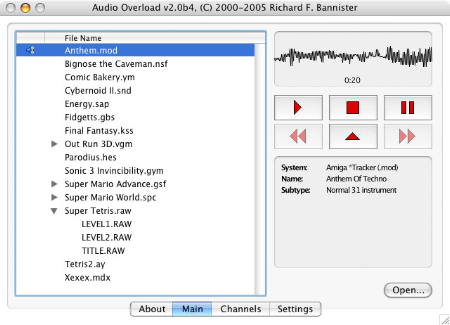


For example, the microphone can’t handle the volume level which it’s detecting and thus distorts the sound that it’s sending into the sound system.
A microphone or sound source, like a computer, is overloaded with sound. Reasons for distortionĪudio distortion can occur for a number of reasons. It will amplify the signal only up to its maximum capacity, at which point the signal cuts or clips at the maximum capacity of the amplifier. Clipping, in this case, occurs when an amplifier is pushed to create a signal with more power than its power supply can produce. It’s one thing to over-drive speakers, it’s another to over-drive an amp. This can be seen on the channel level, mixer level, and even the amplifier level. For the needs of this article, I’ll leave it at that. Clipping occurs when an audio component can’t provide enough power supply voltage to cleanly handle the signal. Typically, clipping is the reason for distortion as distortion is merely the audible detection of clipping. Another way to look at it is the loss of clarity is distortion, the addition of interference is noise. If you run a power cable next to an unbalanced cable, you’ll hear noise (interference) in the signal. Think of it like this, if you scream into a microphone and the mic can’t handle the loud volume, then the audio signal will be distorted. Noise is an external (random) signal added to the original signal. Distortion is heard as the result of a change of the original signal to something else. Noise versus distortionĪn easy mistake to make is hearing noise in the system and assuming it’s distortion. For some reason, the sound coming out of the system has been negatively altered and we need to fix it. We usually identify it when we say something like, “that doesn’t sound right.” And we usually are right in that assessment. It can also be the result of a corruption of the signal at the source. What is distortion?ĭistortion is the sound heard where there is an unexpected change of the original signal to something else. And that last one is what I’m hitting today. A sound tech sees distortion as a bad sound reflecting a problem in the audio system. A guitarist sees distortion as an effect for applying to their guitar’s sound. For others, they picture a distorted image. For some, they immediately think of “distorting words or phrases” wherein someone takes what you have said and twists it into something else. So if, for example, you add the vocal and the balance is now way off, you may have to delete the consolidated track, reload the original individual tracks and re-edit them.The word distortion has different meanings depending on who you ask. The downside of either of these methods is that you cannot edit the individual tracks after they are consolidated you can only edit them as a group. Delete the selected tracks and add a new track. Save the file in a place where you can find it, and name the file so that you can recognize it. All your filters, settings, and effects will be preserved in the combined sound file. This action will export the selected tracks as one sound file to a folder on your computer. 
Go to the Share menu and select Export Song to Disk.Choose four tracks that you regard as complete by clicking the Headphones icon on each track.System overload will be much less likely.Įxample 2: Reactive: You have created a piece with sixteen tracks, and System Overload starts happening.

In this way, you will have reduced the number of tracks from twelve to three, and you can import or record the final four tracks in the normal way to complete your piece. Repeat for the next four tracks and the next four.(Find the sound file you created and drag it over to the Garageband track.) Import the exported sound file to the new track.Delete the four tracks in Garageband and create one new track.This action will export the tracks all as one sound file to a folder on your computer. Apply all your filters and regional settings.Create four tracks and record or import your sound files.Example 1: Preventive: Your piece will be composed of sixteen tracks. You can have your cake and eat it, too! Prevent system overload by building your piece four tracks at a time, or work around system overload by consolidating multiple tracks into a single track.








 0 kommentar(er)
0 kommentar(er)
